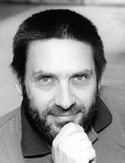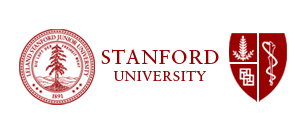Related Websites
 |
palanker@stanford.edu | |
|---|---|---|
| Phone | (650) 725-0059 | |
| URL | https://web.stanford.edu/~palanker/ | |
| Address | Hansen Experimental Physics Laboratory 452 Lomita Mall, room 135 Stanford, CA 94305-4085 |
Professional Interests
Optical and electronic technologies for diagnostic, therapeutic, surgical and prosthetic applications, primarily in ophthalmology:
- Electro-Neural interfaces: Photovoltaic Retinal Prosthesis; Electronic Control of Vasculature and of the Glands
- Optical Imaging and Spectroscopy: Interferometric detection of neural activity
- Laser-Tissue Interactions:
- Non-damaging retinal laser therapy
- Ultrafast laser surgery of transparent tissues
- Retinal plasticity:
- Cellular preservation and proliferation in response to therapy
- Transplanation of retinal cells and neural rewiring
Current research projects
- Photovoltaic Restoration of Sight - optoelectronic subretinal prosthesis
- Interferometric imaging of neural activity
- Laser-Tissue Interactions – mechanisms and therapeutic applications
Some of the previous research projects
- Electronic Control of Organs
- Retinal Plasticity - migration and rewiring of the retinal neurons
- Pulsed Electron Avalanche Knife (PEAK)
- Coherent Anti-Stokes Raman Scattering (CARS) Microscopy
- Optical detection of physiological stress (based on light scattering spectroscopy)
- Plasma-mediated electroporation
- Pulsed liquid microjet
- Near-field Infrared Microscopy with:
- Transient optical elements (using photo-induced reflectivity)
- Tapered fibers
- Solid-immersion microlenses
- ArF excimer laser-based system for vitreoretinal surgery and for skin debridement
- Laser-assisted in-vitro fertilization:
- Photolysis of zona pellucida using the ArF excimer laser-based system
- Thermolysis using a microheater-based system
- Laser poration of cellular membrane: parallel permeabilization of millions of cells using an array of microapertures
- Statistical approach to sub-wavelength measurements using an array of near-field apertures (This idea later inspired rapid DNA sequencing: SMRT™ technology)
Teaching
- Introduction to Electro-neural Interfaces (OPTH 207, NEPR 230)
- Bay Area Ophthalmology Course (lectures on Ophthalmic Lasers and Restoration of Sight)
- Augmenting Human Senses: Enhancing Perception with Technology and Bioscience (Lecture on restoration of sight through biotechnology)
STARTUPS and Technology Transfer
More than 70 patents became foundation of 7 platform technologies transferred to industrial development and manufacturing via startups. The following technologies are currently in clinical use world-wide:- Pattern Scanning Laser Photocoagulator (PASCAL, Iridex)
- Pulsed Electron Avalanche Knife (PEAK PlasmaBlade, Medtronic Inc.)
-
OCT-guided Femtosecond Laser for Cataract Surgery (Catalys, OptiMedica Corp.)
- Neural stimulation for enhanced tear secretion (TrueTear, Allergan Inc.)



